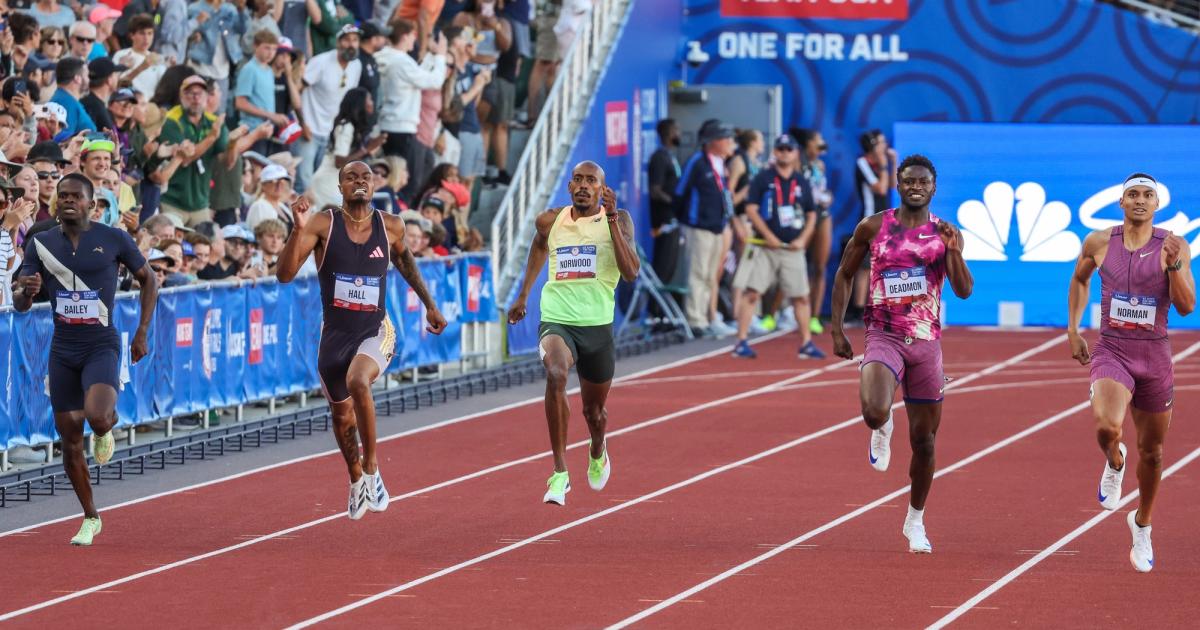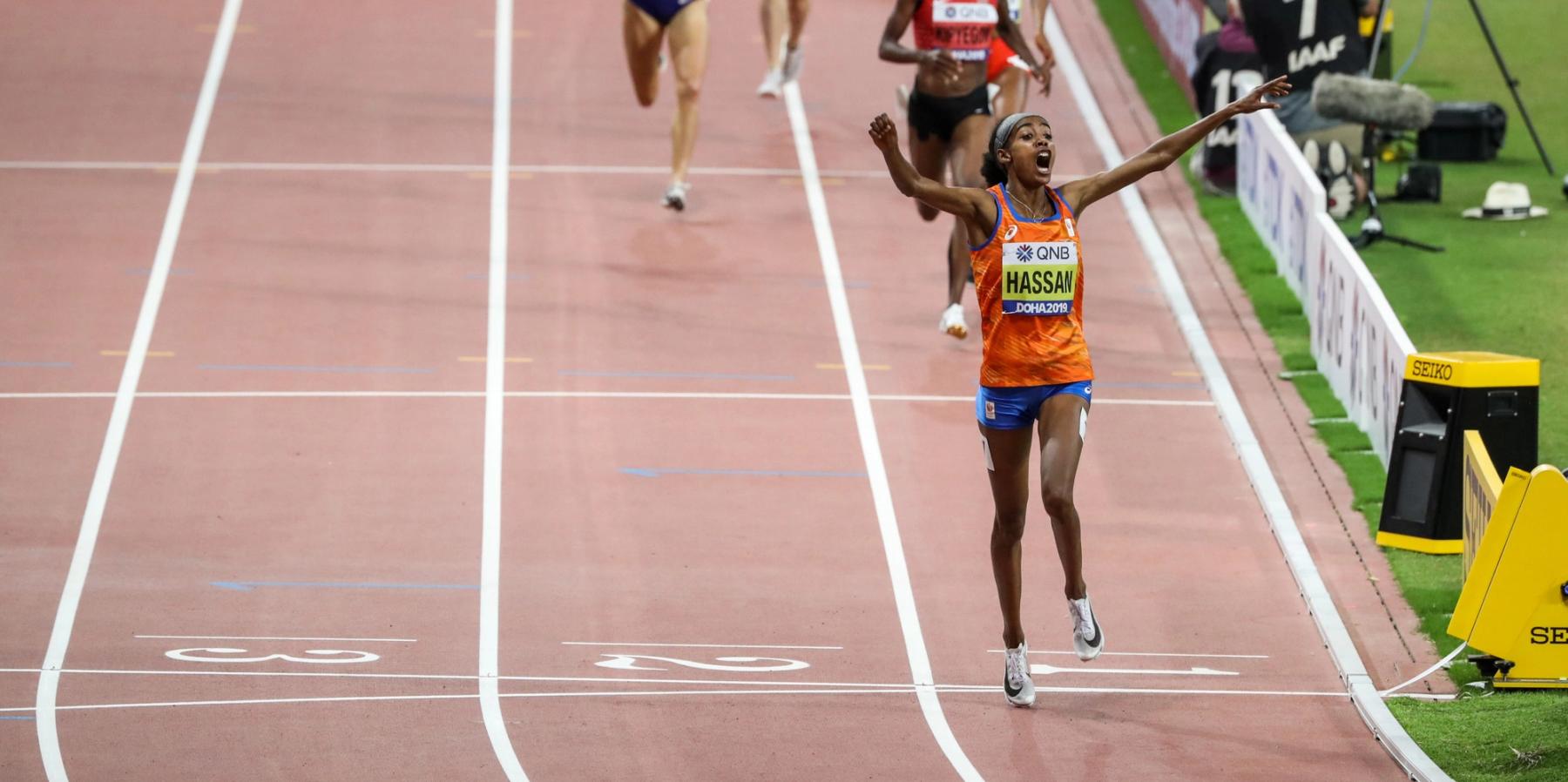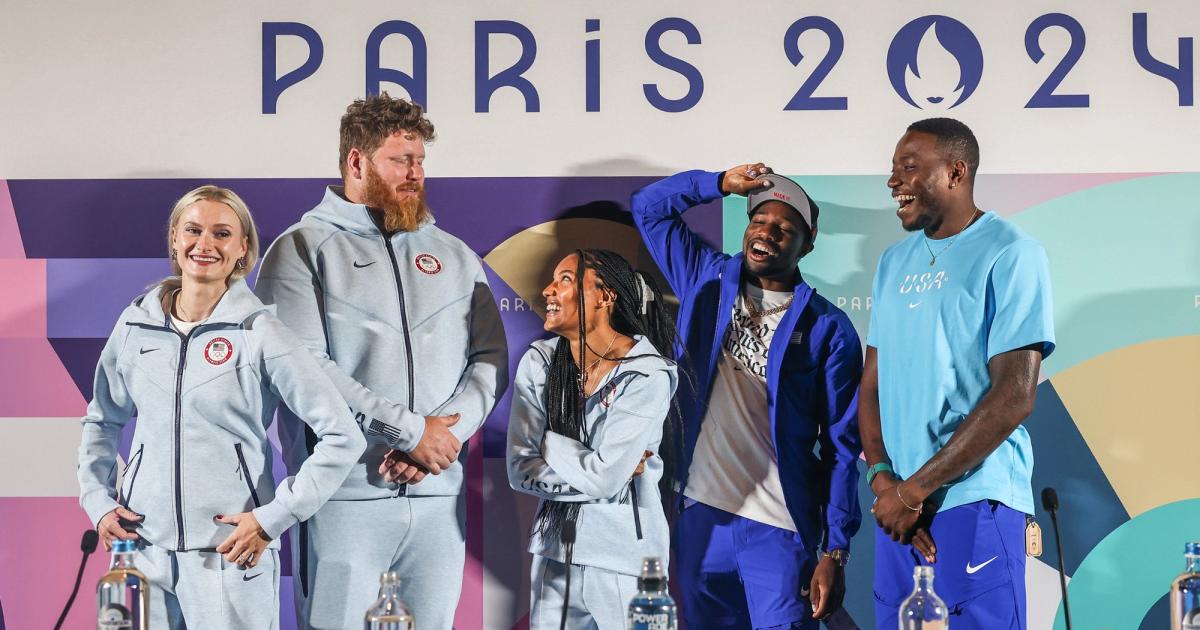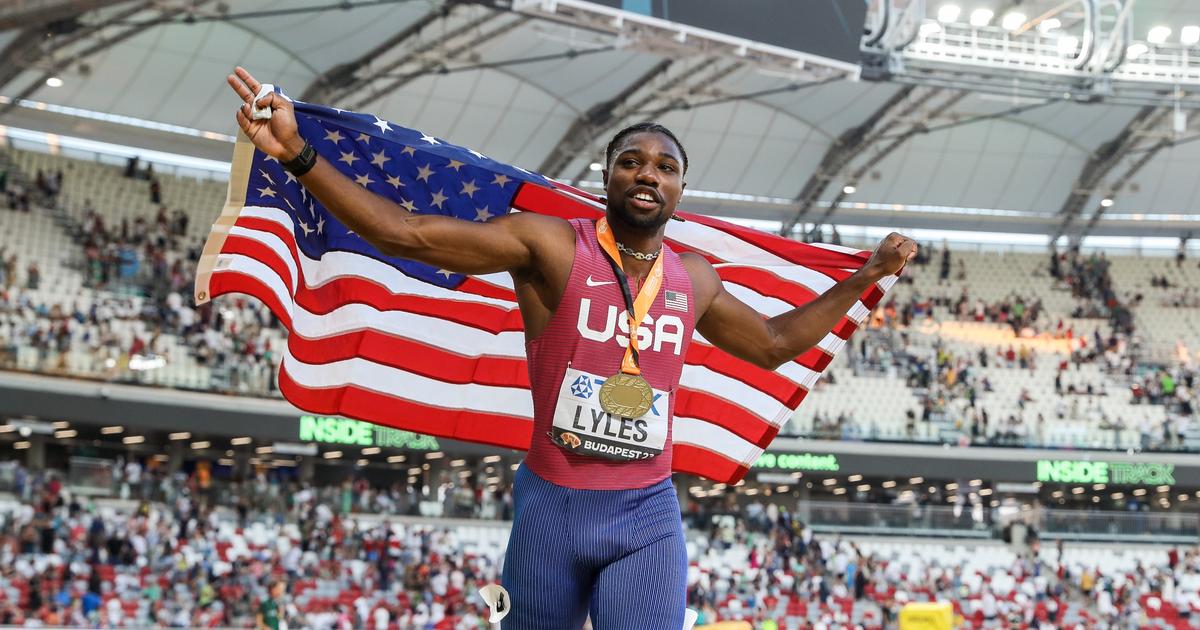By Citius Mag Staff
July 31, 2024
The entire Lap Count team is very ill… with a bad case of “Olympic Fever!” Ha! And accordingly, nobody really felt like writing their usual weekly essays. So we did what any responsible newsletter would, under the circumstances, and opened up the mailbag, picking the best questions we may or may not be qualified to answer:
“Who would you put on the men’s 4x4? Specifically, would you include Noah Lyles?”
Before we make any bold claims about whether Lyles can – or should – win four golds across two individual events and two relays, we have to add a disclaimer: we only know what we know.
We don’t know exactly what Lyles has been doing in training (if anything) to prepare for the possibility of a 400m. We don’t know how Team USA’s large stable of long sprinters is currently doing, health-wise. Anyone who’s ever chased a team championship at the high school or college level knows the panicked scramble that comes when one too many pulled hamstrings lands a miler on the 4x400m. But here’s what we do know: five of the ten fastest runners in the world over 400m this year are on Team USA. Three of those athletes – Bryce Deadmon, Quincy Wilson, and Vernon Norwood – aren’t running individual events and will be fresh for one or both 4x4 relays. And that doesn’t include Chris Bailey or Rai Benjamin, who’ve both run 44.42 this year.
So with that information, you can draw one of two conclusions: Either Team USA shouldn’t take the risk of putting Lyles on the relay when they have such a deep pool of proven commodities to draw from… OR Team USA has such strength in the 400m that they can add an additional layer of intrigue and spectacle to the end of the competition – and still have three strong legs to pick up the slack if Lyles messes up.
Our position, at least until we watch the early events play out, is that the best bet is to play it safe and give other athletes the chance to shine. Guys like Vernon Norwood and Quincy Wilson are already beloved by the track and field community – wouldn’t it be nice to give the broader sports audience the chance to become fans? If Lyles picks up triple gold in the events we know he’s running, he’ll have earned his spot as one of the sport’s all-time greats. A fourth gold would be icing on the cake and wouldn’t change his legacy much – but it could be life-changing for some of the more unsung heroes of Team USA.
“Which American has the best medal chances in the marathon?”

Fiona O’Keeffe winning the 2024 U.S. Olympic Marathon Trials. (Photo by Kevin Morris / @Kevmofoto)
It feels sort of nuts to choose the American marathoner who has only ever run one marathon, but that’s who we’ve gotta go with: Fiona O’Keeffe. O’Keeffe debuted at the Olympic Trials, and won the damn thing in 2:22:10. She trains at least a good portion of the year in hilly, humid North Carolina. And we’ve got to cop to at least a touch of Molly Seidel-induced “inexperience can be a good thing in the marathon!” bias.
All that said, O’Keeffe’s PR slots in as the 40th fastest time run in the world in 2024. Whittle the list ahead of her down to just each country’s Olympic delegation, and account for the fact that O’Keefe’s time was run under less-than-stellar conditions, and she’s still a long shot for a medal, at least on paper. There are some truly incredible athletes she’ll have to outrun. We’d rate her podium odds as “unlikely,” but not quite “will take a miracle” due to the challenging nature of the course. More on that later.
But going back to the previous answer’s “here’s what we do know” framing: we know how Emily Sisson fares against Sifan Hassan in competition. We know where a 2:08 level (the Mantz/Young/Korir Zone) performance usually shakes out in a World Marathon Major-caliber field. We’ve seen Dakota Lindwurm steadily chip away at her PB. What we don’t know is where O’Keeffe’s ceiling really lies.
Could one of the other five U.S. marathoners make a big jump as well, capitalizing on a slower course and a championship-style race? Absolutely. But we have more evidence of past performance to determine our expected range of outcomes. Career marathon starts for Team USA are as follows: Lindwurm - 12, Korir - 7, Sisson - 5, Mantz - 4, Young - 4, O’Keeffe - 1. O’Keeffe is also the youngest of the group, at 26 years old – although Mantz, at 27, is probably the athlete with the second-most upside in the eyes of many. But until she proves otherwise, the sky is the limit for Fiona.
“Who’s the best value for track and field sports betting?”

Julien Alfred at the 2023 World Athletics Championships. (Photo by Kevin Morris / @Kevmofoto)
Disclaimer: The opinions expressed by the Lap Count editorial staff should not be taken as any sort of credible gambling advice. We’re mostly just talking nonsense.
Updated sports-betting odds for the Paris Olympics have been released, and everyone who thinks they have the inside track (no pun intended) is trying to see how they can make a quick buck. The risk-averse might want to pursue some sort of multi-way favorites parlay into reasonable odds – something like Sydney McLaughlin-Levrone x Mondo Duplantis x Grant Holloway seems pretty safe. But there are some deep-value picks out there – here’s a few:
Steven Gardiner (400m, +370): The Olympic champ has had injury issues over the last few years, to be sure, but when he’s healthy, he’s hard to beat: his only two losses over 400m in the last six years have been DNFs. Since 2018, if he crosses the finish line, it’s in first. He hasn’t run sub-44 this year, so it is possible he’ll finally simply be outrun, but he also hasn’t been seeking out fast tracks and Diamond League competition much this year.
Julien Alfred (100m, +500): With huge question marks around Jamaicans Shelly-Ann Fraser-Pryce and Shericka Jackson, all it would take is one misplaced step or sloppy start from Sha’Carri Richardson for Alfred to find herself atop the podium. The second-fastest woman in the field by season’s best has looked incredibly strong all summer and is fresh off a 21.86 PB in the 200m, her weaker event, where she managed to fight World silver medalist Gabby Thomas to the line.
Tobi Amusan (100H, +1000): The 2022 World champ and world record holder in the event is far from unbeatable this year; her most recent race was a loss to U.S. Trials third-placer Grace Stark. But as most people view the 100m hurdles as an evenly-matched bout between five or six contenders, it was wild to see Amusan so far down on the list – particularly when the world lead of 12.28 is 0.16 slower than Amusan at her world-beating best.
Hugues Fabrice Zango (TJ, +2000): We had to double check to see if we’d missed any injury reports when we saw these odds. Zango, the reigning indoor and outdoor World champion in the triple jump, may not have jumped as far as the champ and runner from the European Championships, Jordan Diaz Fortun and Pedro Pichardo, but he’s won nine of his 10 competitions this year and is coming off a season’s best 17.57m in his most recent meet. Zango, the bronze medalist in Tokyo, has also shown real consistency in championships, winning medals at each of the last four global outdoor championships.
“If Team USA had to field a mixed gender 4x400m relay entirely of athletes from other sports, who would be the best choices?”
Leg 1 - Men’s basketball’s Anthony Edwards: Anthony Edwards is – athletically speaking – about 10x more impressive than that JV basketball kid from your high school who managed to split a 50.X the one time he ran the 4 x 400m. In fact, he’s among the most explosive leapers in basketball today, so you have to assume he can get out hard and stay out of trouble, which might otherwise be a concern for a 6’4” athlete. During the ‘23-’24 NBA season he ran on average ~2.5 miles per game played for the Minnesota Timberwolves, so his engine’s decent, too. Then there’s his borderline deluded sense of confidence. If sufficiently gassed up, Ant would 100% believe he’s got a 48.X split in him, and while that outcome is highly unlikely, he would willingly go to the well to prove it possible.
Leg 2 - Women’s tennis’s Coco Gauff: You occasionally hear rumors about tennis players running 400m repeats as part of offseason conditioning. Repeat times get tossed around that sound plausible, yet still mighty impressive for an athlete that doesn’t technically have to be doing crap like that. Coco Gauff is an incredibly talented athlete, who’s known for her quickness and fluidity on the court. Based on this training montage, she seems to do a lot of hard things in preparation for matches that at least wouldn’t hurt one’s ability to clock a quick quarter mile. That sounds like a good second leg to us.
Leg 3 - Men’s triathlon’s Morgan Pearson: This sort of feels like cheating in the sense that Morgan Pearson was five-time NCAA track All-American for Colorado back before he pivoted to triathlon semi-full-time. While a Buff, Pearson did manage to run a 1:52.89 800m at one point. World Athletic scoring tables suggest that was worth a 48.57 over 400m. Given the thousands of miles he’s since logged on the roads, on his bike, and in the pool, we can assume he’s significantly stronger but probably a touch less snappy, now. But it’s a damn relay! Rolling start! Bright lights! Roar of the crowd! He’s still got a sub-50 split in him. We just know it.
Leg 4 - Women’s soccer’s Lynn Williams: Writing this section of the newsletter is neither art nor science. It’s content, baby. And that means we are really going to take some liberties with our reasoning. In a game setting, Williams has been clocked running – for at least a short stint – a blistering 21.11mph. Continued for 400m, that’s a 42.39, and while obviously she’s not hitting us with a sub-43 split, it indicates tremendous wheels. Digging in further, Williams’s sister ran track at Cal Poly, specializing in the shorter sprints, and their parents both ran track at Fresno State. That’s the sort of pedigree you simply love to see having already committed to slotting an athlete into your theoretical Olympic 4 x 400.
“How do you feel about the Olympic marathon course? Is it good that it’s so hilly?”
We have a lot to say here. To answer this question, first we need to talk about a prominent high school cross country course in California.
It was announced last weekend that the historic course of the Mt. SAC Cross Country Invitational would be altered, removing one of its signature hills and now winding up with an on-track finish, to make it way more boring. That’s of course not what the event’s PR angle was. They mentioned things like a desire to “enhance [the] spectator experience” and “evolving trends in cross country that emphasize speed and endurance over challenging hills.”
Everyone is pissed. We are pissed. The only people who aren’t pissed are a few dozen California teenagers who will for the rest of their lives get to brag about having a sub-15 “three mile” PR.
And why? Because the hills are what makes Mt. SAC a legendary cross country course – that and the fact that generations of uber-talented high school harriers have waged battle on the same undulating terrain. It’s both a rite of passage and something to be feared. Nobody speaks in hushed, ominous tones about cross country courses in Texas that are just loops of soccer fields for a reason.
This is all to say that the same holds true for marathon courses. Yes, the flat, and frankly UN-AMERICAN World Majors are iconic. They are World Majors. That makes them inherently iconic. That and the fact that for the most part – no shots at Chicago here – they run past thousand-year-old shit.
But consider Heartbreak Hill, a gradual, 88’ climb along a fairly nondescript stretch of Commonwealth Avenue in Newton, Massachusetts. In the context of the Boston Marathon, it’s the stuff of legend, and athletes’ assessments of their races almost always hinge on how they handled that particular ascension.
Now consider the Paris ‘24 marathon course. It’s got a yet-to-be-named hill that’s six times the size of Heartbreak. We’re nodding like Jack Nicholson in The Departed just thinking about the carnage that will result from that bit of topography alone, and we don’t think it’s farfetched to suggest people will be talking about this hill for decades to come. Will it break a favorite? Will some unknown rise (literally) to the occasion? Even if you could analyze the training and injury history of every runner in each marathon field for the last 12 months, that won’t tell you how they’ll fare on a course with a certified widowmaker like this.
So to answer your question… we love it. This is an awesome marathon route. There’s a time and a place for speedway style courses. But as is Lap Count policy, we need to reiterate that when the potential for a world record-setting performance is the main draw of an event, if the athletes fall short, that makes that event a bust. Championship-style racing on a hard, hilly-ass course is always going to provide something at the very least interesting, and at best, for the history books.

Citius Mag Staff




